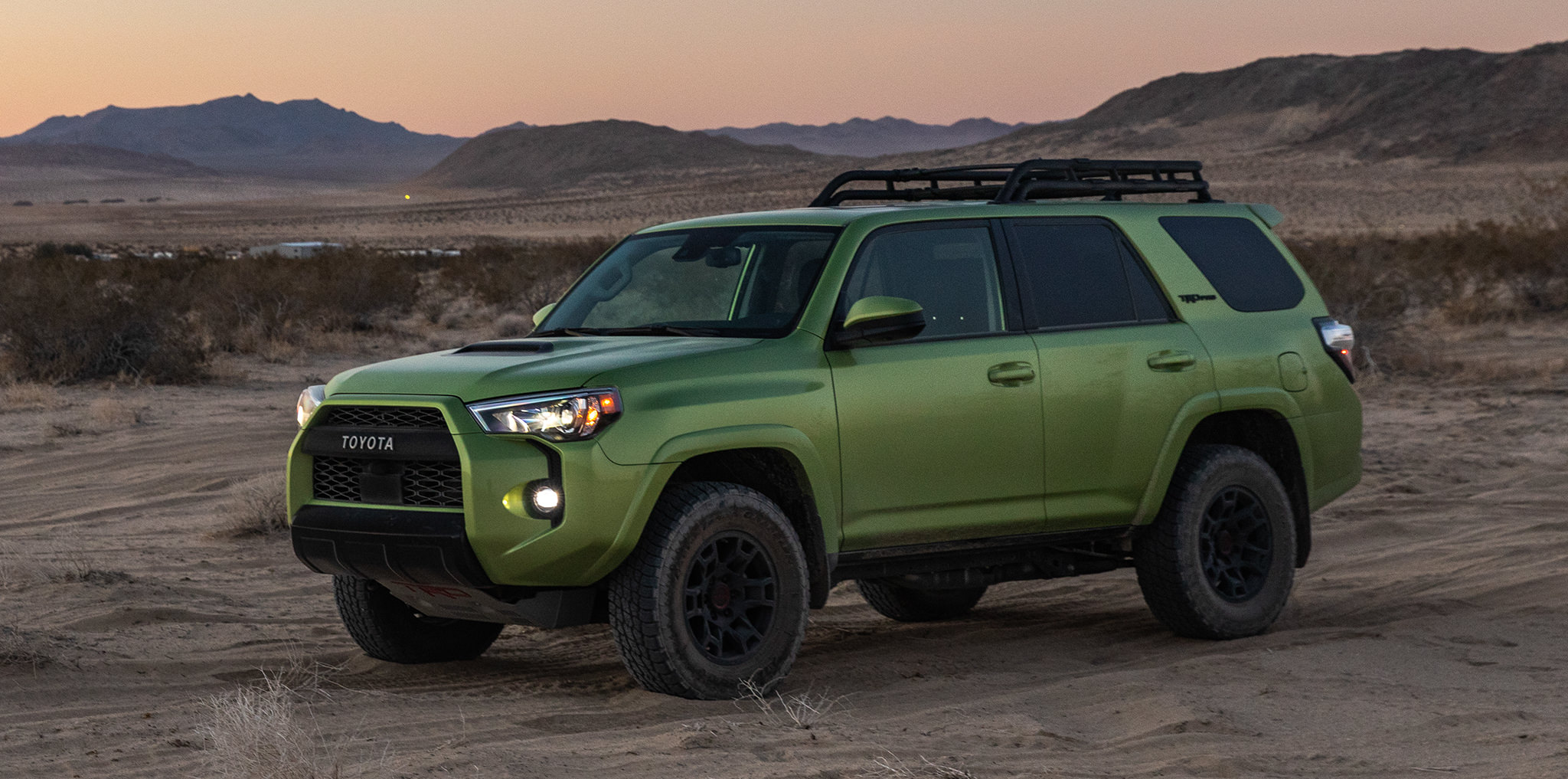Whether you’re shopping for a new car, browsing used car listings, or walking into a dealership with a trade-in, one thing quickly becomes clear: not all vehicles are treated equally. Some cars command instant attention and top-dollar offers, while others are met with polite shrugs or worse—outright rejection. Why?
Because car dealerships, as profit-driven businesses, carefully analyze what cars are worth buying back and which ones are better off left behind. While this seems logical on the surface, there’s a surprisingly complex strategy at play.
Dealers don’t operate on emotion. They analyze a vehicle through a lens of resale potential, longevity, repair costs, demand in the local market, and brand reputation. A car that’s stylish or was once popular, new doesn’t automatically mean it’ll hold value years later.
What a dealership truly cares about is how quickly and profitably a car can be resold, and how much it will cost them to get it ready for the next owner. This means things like reliability, market demand, parts availability, and vehicle history reports matter more than flash or sentiment.
Vehicles that are easy to maintain, have a record of minimal mechanical issues, and have strong resale value are almost always welcomed back with open arms. For example, if you roll into a dealership with a well-maintained Toyota Tacoma or Subaru Outback, the dealership may already have buyers lined up who are eagerly awaiting a similar vehicle.
These cars are known for their dependability and market desirability, which means they represent a low-risk, high-reward trade-in.
On the flip side, there are cars that dealers tend to avoid—sometimes aggressively.
These vehicles often suffer from poor reliability ratings, high depreciation, expensive repairs, or low demand. The dealership knows that even if they take these cars in, they may have to either wholesale them at a loss or spend too much time and money trying to resell them. This includes models like the Fiat 500 or the Dodge Dart, which might have seemed appealing at first but quickly lost traction in the broader used vehicle market.
It’s also worth noting that regional preferences play a role. For instance, an all-wheel-drive SUV like the Subaru Outback might be hot in snowy regions but not as coveted in the Sun Belt.
Similarly, small, fuel-efficient cars might be more appealing in urban areas but not in places where larger trucks and SUVs dominate. Dealers are well aware of these patterns and tailor their trade-in strategies accordingly.
Then there’s the luxury conundrum—many people assume that premium brand vehicles automatically carry strong resale value. But that’s far from true. Luxury sedans like the BMW 7 Series can lose a significant portion of their value within just a few years.
Worse, their complicated systems and high repair costs make them unattractive options for most used car buyers. So, while they might look good on a dealership lot, they often require deep discounts or sit for months before a buyer comes along.
This article breaks down the two sides of the buyback coin. First, we’ll look at five vehicles dealers are always eager to get back into their inventory. These are reliable, well-loved, and easy to resell. Then, we’ll dive into five vehicles that dealers tend to avoid, whether because of poor reliability, low demand, or simply bad experiences in the past.
Whether you’re planning to trade in your car, sell it privately, or just understand what makes a car valuable in the eyes of a dealer, this guide offers a comprehensive look into what drives dealership decisions—and how you can use that insight to your advantage.
Also Read: Top 10 EV Features That Come in Useful in Daily Commute
5 Cars That Dealers Love to Buy Back
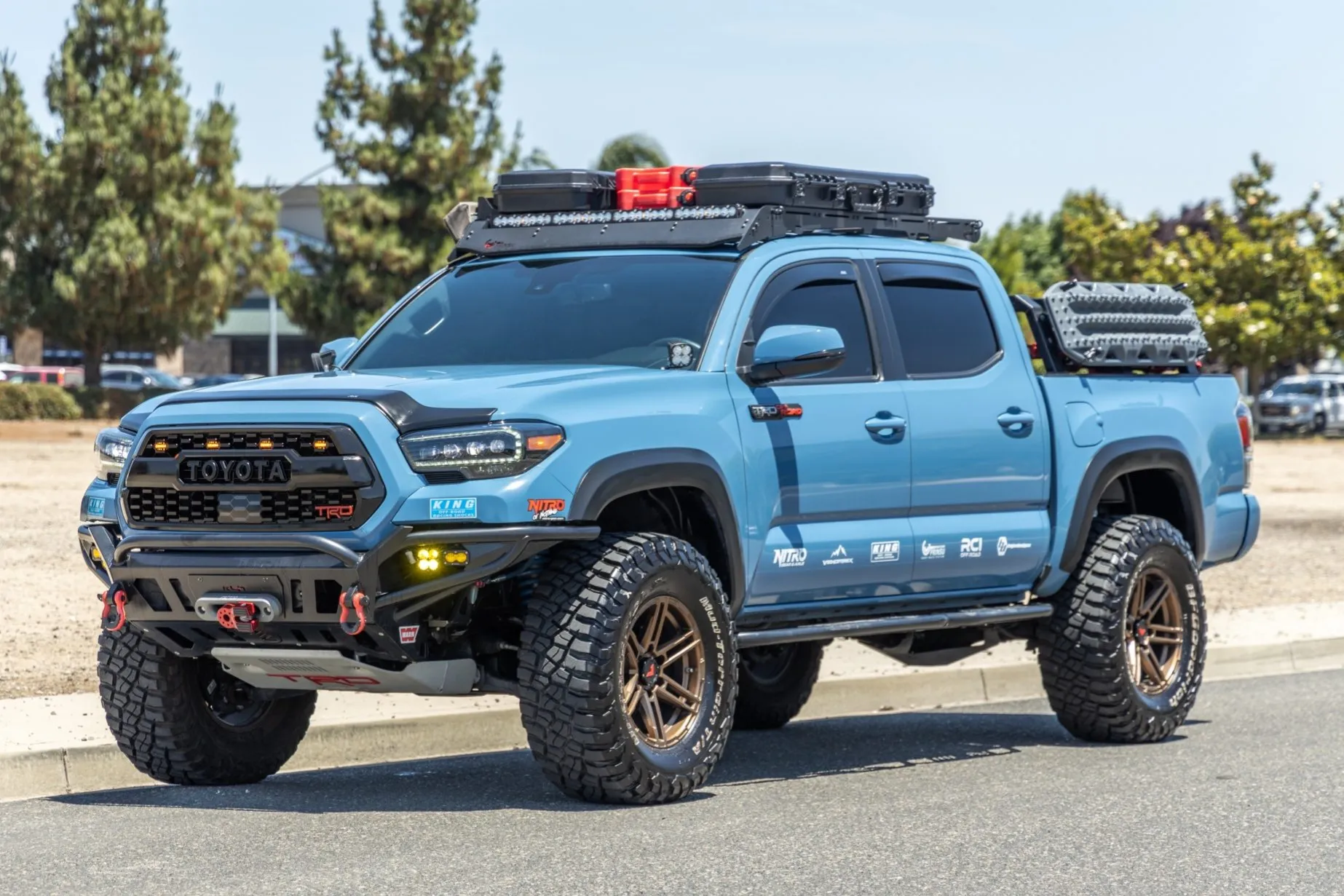
1. Toyota Tacoma
The Toyota Tacoma holds a unique position in the automotive resale world: it’s one of the few vehicles that not only retains its value but sometimes appreciates under the right market conditions. This mid-size pickup has built a nearly mythical reputation for reliability, durability, and longevity.
Ask anyone in construction, outdoor recreation, or rural communities, and chances are they either own a Tacoma or know someone who swears by it. Dealers recognize this strong market loyalty and are often eager to get their hands on used Tacomas, especially ones with lower mileage or desirable configurations like TRD Off-Road or TRD Pro trims.
Another factor that boosts the Tacoma’s trade-in desirability is its sheer versatility. Unlike some pickups that are purely utilitarian or strictly lifestyle vehicles, the Tacoma straddles both worlds effortlessly. It can serve as a daily commuter, a workhorse, or a weekend adventure rig.
This wide market appeal ensures that demand remains consistently strong. Furthermore, Toyota has maintained a relatively conservative design philosophy with the Tacoma—evolving it gradually rather than radically—so even older models maintain a visual and functional relevance that appeals to modern buyers. For dealers, this continuity reduces the marketing effort needed to move a used Tacoma off the lot.
From a financial standpoint, Tacomas are a win for dealers. Their strong residual values mean higher resale prices, which translates into greater profit margins. They also tend to require minimal reconditioning if well-maintained.
Combined with their track record for reliability and ease of financing (banks are more willing to underwrite loans on vehicles that hold value), the Tacoma becomes a textbook example of a used vehicle that flies off the lot. Dealers not only welcome them—they actively seek them through trade-in promotions and private seller outreach.

2. Honda CR-V
When it comes to crossover SUVs, the Honda CR-V is often seen as the gold standard. It’s one of the best-selling vehicles in its segment for a reason: it offers a near-perfect blend of affordability, efficiency, practicality, and dependability. These qualities also make it one of the most sought-after trade-ins on dealership lots.
Dealers love the CR-V because it fits the profile of what the average used car buyer wants—ample space, strong safety scores, fuel economy that doesn’t break the bank, and a nameplate synonymous with long-term reliability.
Unlike many vehicles that lose significant value after just a few years, the CR-V manages to retain a solid resale price. That’s partly due to its broad appeal. A young professional, a small family, a retiree, or a ride-share driver could all realistically consider a CR-V a perfect fit for their needs.
This universality means that when dealers take in a used CR-V, they know there’s a wide pool of potential buyers. Models with all-wheel drive, leather seats, or advanced safety features such as Honda Sensing tend to move even faster on the used market, making them especially attractive in trade-ins.
What also works in the CR-V’s favor is Honda’s reputation for quality manufacturing and low-cost maintenance. A well-kept CR-V can easily surpass 200,000 miles with minimal trouble, making it a stress-free addition to a dealer’s used inventory.
The vehicle’s simple yet functional design, ease of parts availability, and excellent fuel economy allow dealers to recondition and resell CR-Vs quickly and profitably. Even when competing against other popular crossovers, the CR-V consistently punches above its weight class in the eyes of dealers and buyers alike.

3. Subaru Outback
The Subaru Outback is more than just a vehicle—it’s a lifestyle choice, and that’s exactly why dealers love having it in their inventory. Over the years, the Outback has cultivated a loyal fan base of outdoor enthusiasts, safety-conscious families, and practical buyers who appreciate a vehicle that blends SUV utility with wagon comfort.
Thanks to Subaru’s standard symmetrical all-wheel drive, the Outback handles snow, dirt roads, and rough terrain with ease, making it highly popular in regions with four seasons or rural landscapes. This consistent demand across diverse demographics and geographies makes it a smart investment for any dealer.
In addition to its off-road and all-weather capabilities, the Outback scores high marks for safety, comfort, and fuel efficiency. Newer models come equipped with Subaru’s EyeSight Driver Assist technology, which includes adaptive cruise control, pre-collision braking, and lane-keeping assist—features that today’s buyers specifically ask for.
Even earlier generation Outbacks have proven themselves to be reliable and easy to maintain, giving buyers peace of mind and dealers confidence in reselling them. The vehicle’s unique shape also contributes to its practicality, offering cargo space that rivals larger SUVs while maintaining the driveability of a car.
From the dealership’s perspective, Outbacks are straightforward to market and sell. They appeal to eco-conscious consumers, pet owners, and road-trippers alike. The model’s rugged branding and consistent reliability ratings mean that a used Outback can hold its price tag well compared to other vehicles in its class.
It’s not uncommon for dealers to take in a trade, perform a basic inspection, and have the Outback sold again within a week, sometimes even days. The Subaru Outback may not be flashy, but its all-around appeal makes it a dealer favorite.

4. Lexus RX
The Lexus RX stands at the crossroads of luxury and reliability, making it one of the most profitable and desirable trade-ins for car dealers. While most luxury SUVs tend to depreciate rapidly and come with high maintenance baggage, the RX is a refreshing exception.
Built on Toyota’s trusted engineering platform, the RX offers the best of both worlds: premium amenities and long-term dependability. Buyers in the used luxury market are often wary of German brands due to expensive repairs, but they see Lexus as a safer, smarter investment, and dealers are keenly aware of that.
From plush leather interiors and advanced infotainment systems to whisper-quiet cabins and smooth rides, the RX checks nearly every box on a luxury buyer’s wishlist. What truly sets it apart, though, is its low cost of ownership. Lexus vehicles are known for their strong resale values, minimal unscheduled repairs, and wide availability of affordable parts.
For dealers, this means that a used RX can often be certified and resold at a premium price without the fear of a warranty claim or high reconditioning expense. Models equipped with hybrid powertrains (like the RX 450h) are even more attractive in today’s eco-conscious market.
Another advantage for dealers is brand loyalty. Lexus has one of the highest customer retention rates in the industry, and RX owners are often repeat buyers. This opens up trade-in opportunities that dealers love: when someone brings in their 5- or 6-year-old RX for a newer model, the dealer can confidently offer a strong trade-in value knowing the vehicle will resell quickly. In the world of used luxury vehicles, the RX remains a stable, low-risk, high-reward proposition for car dealers.
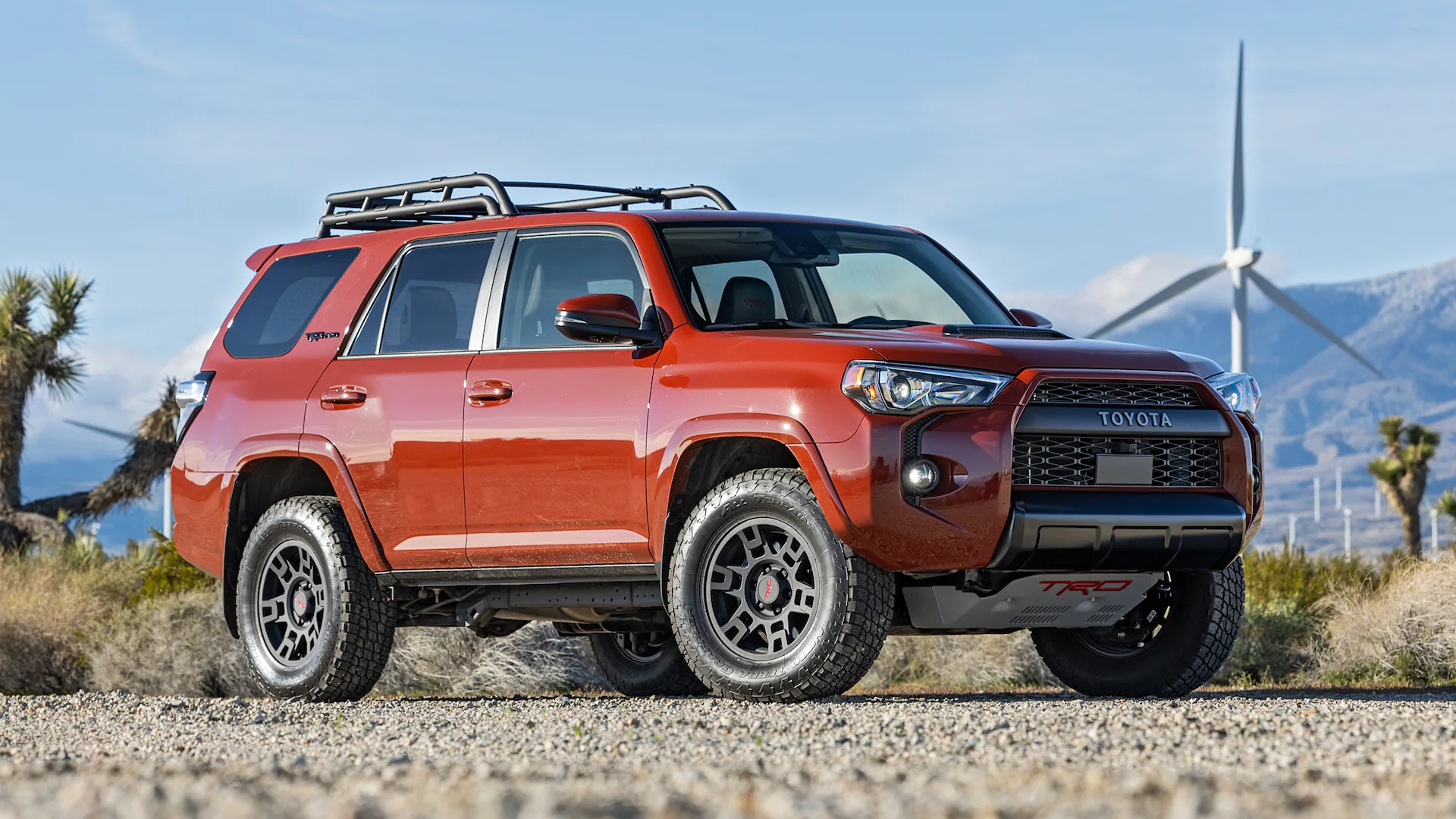
5. Toyota 4Runner
If there’s one SUV that truly embodies the phrase “built to last,” it’s the Toyota 4Runner. Known for its rugged construction, off-road prowess, and rock-solid reputation, the 4Runner is one of the few remaining body-on-frame SUVs that still thrives in a market dominated by unibody crossovers. For dealerships, this vehicle is a goldmine.
Not only does it command strong resale values, but it also appeals to a very loyal niche audience that is willing to pay a premium for what the 4Runner offers.
Dealers especially value the 4Runner because it occupies a unique space: it’s rugged enough for outdoor enthusiasts and overlanders, yet refined enough for suburban families who want something more capable than the average crossover. The 4.0-liter V6 engine, while not the most fuel-efficient, is celebrated for its durability and simplicity.
Many 4Runners on the used market come with 150,000 to 200,000 miles and are still fetching impressive trade-in and resale prices—something few other SUVs can claim. Add in Toyota’s extensive dealer network and parts availability, and you have a recipe for a highly profitable used vehicle.
Furthermore, Toyota hasn’t significantly altered the 4Runner’s styling or drivetrain in over a decade. That continuity gives buyers confidence that even older models are still relevant and capable. For dealers, this means less time and money spent explaining why a 7-year-old SUV is still worth the asking price—it sells itself. Whether it’s a Trail Edition, TRD Off-Road, or Limited model, the Toyota 4Runner consistently proves to be a valuable and desirable asset on any used car lot.
5 Cars That Dealers Won’t Touch

1. Fiat 500
At first glance, the Fiat 500 seems like it should be a charming, urban-friendly car with unique styling and European flair. It certainly caught the attention of younger buyers and city dwellers when it reentered the U.S. market under the Chrysler-Fiat umbrella.
But while its retro-inspired aesthetics and small footprint made it visually appealing, the car quickly developed a reputation that made dealers hesitant to accept it as a trade-in. The Fiat 500, unfortunately, suffers from serious reliability concerns, inconsistent build quality, and a lack of long-term consumer confidence—three red flags that make it an unattractive asset for most dealerships.
Dealers are particularly wary of Fiat 500s because of their high cost-to-value ratio in the resale market. These cars depreciate steeply, often losing more than half their value within the first three years. That alone makes them a hard sell, but what compounds the problem is the car’s reliability record.
Numerous reports cite frequent issues with the transmission, electrical systems, and drivetrain, especially in earlier models. Even the sportier Abarth variant, while more engaging to drive, doesn’t escape these concerns. For a dealer, every car they put on the lot must inspire buyer confidence, and the Fiat 500 rarely delivers that. Repairs are frequent, parts are less readily available than for mainstream brands, and service costs can quickly outweigh profit potential.
Beyond mechanical concerns, there’s also the issue of market demand, or lack thereof. The Fiat brand never quite established itself in the U.S. in the way it had hoped. The 500 appeals to a narrow niche, and its two-door design, limited cargo space, and subcompact sizing restrict its usefulness for the average consumer.
Dealers know this and often find themselves sitting on Fiat inventory for longer periods, or being forced to send it to auction at a loss. In a market increasingly focused on practicality, dependability, and resale strength, the Fiat 500 simply doesn’t cut most dealers.
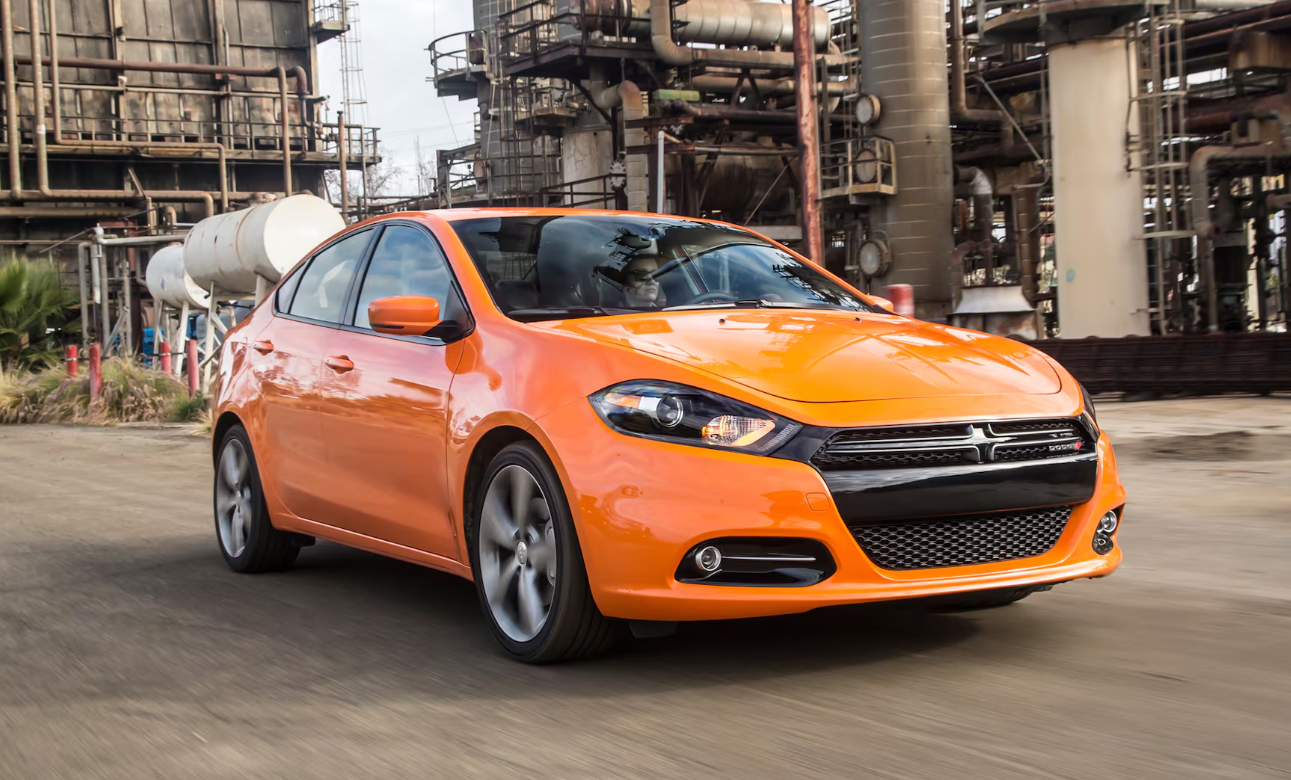
2. Dodge Dart
The Dodge Dart is a classic case of a car with strong initial hype but no lasting impact. When Dodge reintroduced the Dart in 2013, it was supposed to be a modern answer to compact car competitors like the Honda Civic and Toyota Corolla. It featured sharp styling, a tech-forward interior, and multiple powertrain options.
But what it lacked was long-term vision and execution. Buyers quickly discovered that the Dart’s performance was underwhelming, its build quality questionable, and its value rapidly declining. Within just a few years, Dodge discontinued the model entirely, leaving behind a car that dealers today rarely want to deal with.
One of the main issues is that the Dodge Dart doesn’t have a strong identity or following. Unlike rivals in the compact segment, which have built up decades of consumer trust, the Dart was a short-lived experiment that never truly connected with its audience. From a dealer’s standpoint, that lack of brand loyalty is a dealbreaker.
Cars like the Civic and Corolla practically sell themselves—Darts require explanation, reassurance, and often a lower price to attract interest. That puts more pressure on the dealership, not only in terms of marketing but also in managing price margins that are already razor-thin due to low resale value.
The Dart also brings logistical concerns for dealerships. Since the vehicle has been out of production for several years and never achieved high sales volume, parts availability is already starting to become an issue. The turbocharged variants, in particular, are prone to problems that are expensive to repair.
Add to that Dodge’s inconsistent reliability record during that period, and you end up with a vehicle that dealers simply don’t want to risk having on their lot. Most trade-ins are met with low-ball offers or are redirected straight to auction where resale expectations are minimal. In short, the Dodge Dart is more of a liability than an opportunity.

3. Chevrolet Spark
The Chevrolet Spark may rank among the most affordable new cars sold in recent years, but low price doesn’t necessarily equate to high demand in the used car market. For dealers, the Spark represents a low-reward trade-in that often brings more complications than profits.
One of the key issues is that cars sold primarily on price tend to attract buyers who are looking for short-term solutions, not long-term relationships with their vehicles. As a result, many Sparks brought in as trade-ins are either heavily used, poorly maintained, or on the verge of mechanical problems, which complicates resale efforts for dealerships.
From a desirability standpoint, the Spark is hampered by its size, performance, and perceived value. While the subcompact may be perfect for tight city driving, it doesn’t suit the broader American market, which leans heavily toward crossovers, SUVs, and trucks. Its minimal cargo space, cramped rear seating, and bare-bones interiors don’t help its case either.
Even though it boasts solid fuel economy, that benefit is often offset by its underpowered engine and basic features. Dealers find that customers are generally willing to pay a little more for a bigger, more comfortable used car, making Sparks hard to move even with aggressive pricing.
The Spark’s rapid depreciation is another strike against it. Despite its low MSRP, the car loses value quickly—especially after the first two or three years. Used buyers see the Spark as a budget-first choice, and that means the resale ceiling is low to begin with.
For dealers, this translates into tight profit margins, high sales resistance, and a longer time sitting on the lot—something no dealership wants. That’s why many dealers offer minimal trade-in value for a Spark or avoid it altogether unless it’s nearly new and in excellent condition. Even then, it’s often passed over in favor of more marketable alternatives.
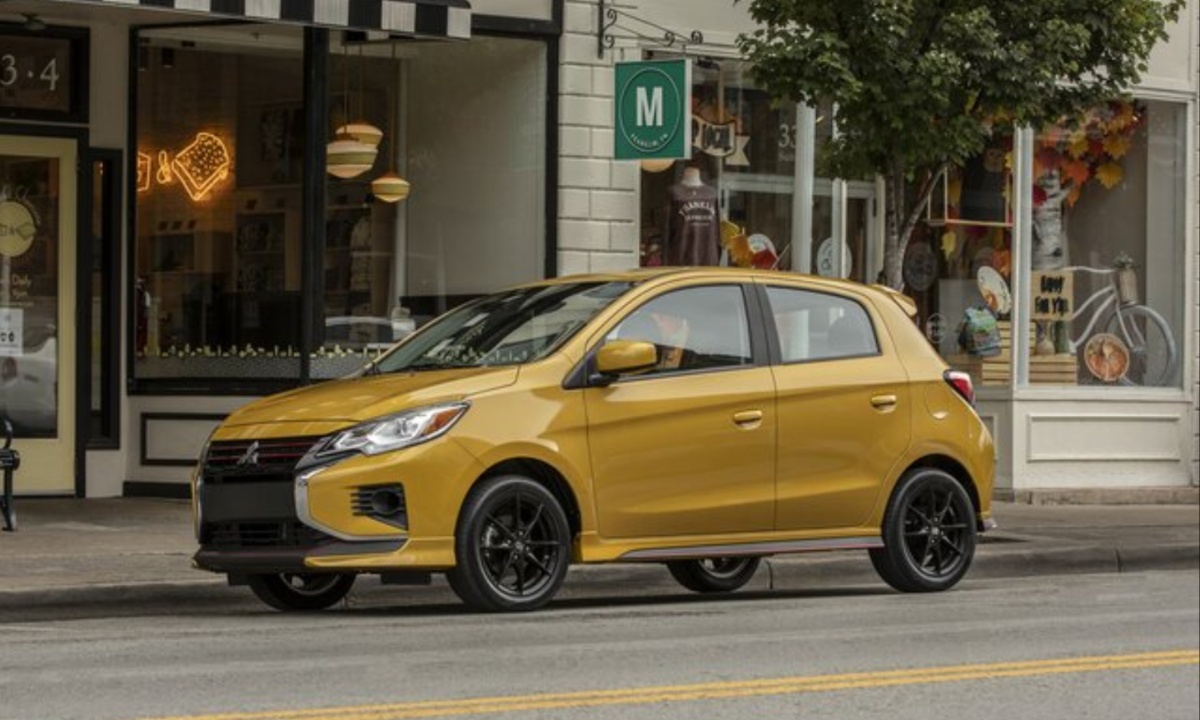
4. Mitsubishi Mirage
The Mitsubishi Mirage is one of those vehicles that frequently shows up on “worst resale value” lists, and for good reason. While its ultra-low sticker price might make it attractive to first-time buyers or those seeking absolute fuel efficiency, it comes with a host of drawbacks that make dealers extremely hesitant to trade it on trade.
The Mirage has long been criticized for its poor build quality, noisy cabin, lackluster driving dynamics, and underpowered three-cylinder engine. These issues are well-known in the industry and among consumers, which makes reselling a used Mirage an uphill battle.
From a dealership’s perspective, the Mirage’s reputation precedes it. Customers walking onto a lot generally have negative preconceived notions about the vehicle, or worse, no interest in it at all. This means dealers must often discount them heavily to get any traction, which drastically reduces profit potential.
Additionally, the Mirage suffers from poor crash test ratings and lacks many of the safety and convenience features found even in its budget-priced competitors. This further limits its appeal, especially for family buyers or those who prioritize peace of mind in their purchases.
Another major concern is Mitsubishi’s overall market position. With a dwindling dealer network in the U.S. and uncertain long-term viability, the brand doesn’t inspire confidence. That lack of support trickles down into parts availability, service challenges, and resale hesitation.
Even though Mitsubishi has made some strides in other areas of its lineup, the Mirage continues to be a bottom-tier offering that few dealers want to have on their lot. For many, it’s a car that only makes financial sense as a new, no-frills commuter, not as a used vehicle with declining value and diminishing demand.
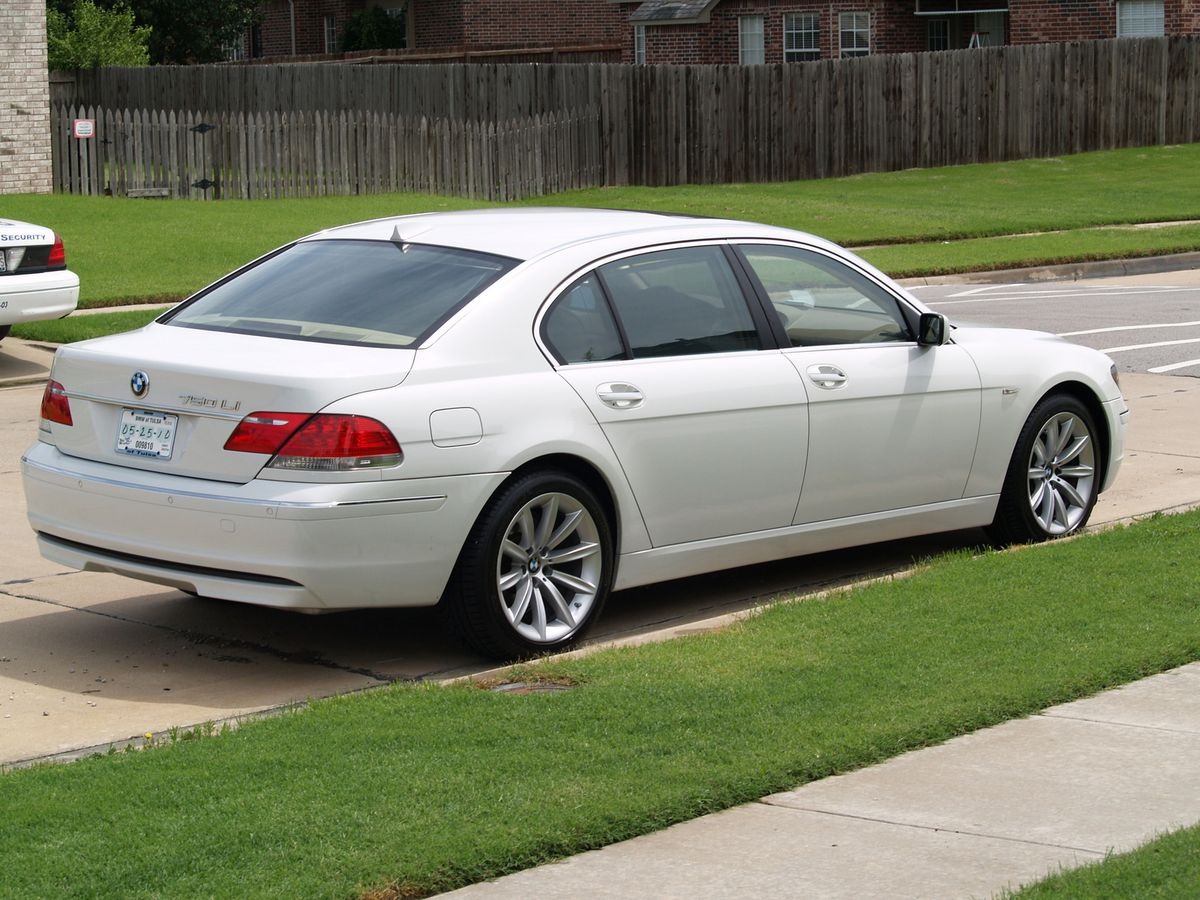
5. BMW 7 Series (Older Models)
Luxury cars often come with the allure of prestige and performance, but when it comes to the BMW 7 Series, especially older models, that allure quickly fades for most dealers. Despite its status as BMW’s flagship sedan, the 7 Series is notorious in the industry for its rapid depreciation, complex systems, and astronomically high maintenance costs.
These factors make it a high-risk trade-in—one that many dealers would rather avoid entirely unless it’s nearly new and in pristine condition. For a used car dealer, profitability depends on reliability and ease of ownership, two areas where the aging 7 Series struggles significantly.
One of the biggest drawbacks of older 7 Series models is their complexity. BMW has long used this model line to showcase cutting-edge technology and innovation, but that also means more systems can go wrong.
From adjustable air suspensions and iDrive infotainment systems to active steering and electronically controlled everything, these features are costly to repair and frequently require specialist attention. Even minor issues can lead to repair bills in the thousands, which is not something most used car buyers—or dealers—want to risk. As a result, trade-ins often yield very low values, and many 7 Series cars are sold wholesale or avoided altogether.
Beyond the mechanical concerns, the customer base for an older luxury sedan is narrow. Most people shopping for a used car in that price range prefer something with a more modest maintenance profile. Buyers who do want a luxury nameplate often opt for certified pre-owned models or newer offerings with warranties intact.
Dealers recognize that selling a 7 Series, especially one that’s more than five years old, involves a long wait, a steep discount, or both. And since these cars don’t hold value well, the margin for error is thin. In the end, the BMW 7 Series is a perfect example of how luxury on paper doesn’t always translate into dealership profit or desirability.
Also Read: 5 Trucks With the Best Cold Weather Reliability and 5 That Freeze Up Fast
What Your Car Says to a Dealer
So, what does your car say to a dealer when you pull into the trade-in lane? It says a lot more than just its make and model. It tells a story of reliability, demand, history, and profit margins. And in today’s hyper-competitive used car market, dealerships are listening closely.
Whether your vehicle is met with enthusiasm or a polite rejection depends not just on how it looks or how well it drives, but on how the dealer assesses its overall risk versus reward. It’s a numbers game—but one driven by experience and industry insight.
If you’re the proud owner of a vehicle like a Toyota Tacoma, Honda CR-V, or Subaru Outback, chances are you’re sitting on what the industry affectionately refers to as “liquid metal.” These vehicles are easy to move, have loyal followings, and often require minimal effort to recondition and sell.
Their strong reputations mean that customers actively seek them out, making them high-value commodities for any dealership. This demand allows dealers to offer more competitive trade-in values because they know they’ll recover that investment quickly—and profitably—once the vehicle is back on the lot.
These cars also benefit from something that can’t be manufactured overnight: brand trust. Toyota, Honda, Subaru, and Lexus have all built reputations over decades for quality, durability, and customer satisfaction. That brand equity is what gives these vehicles their long-term value and makes them such desirable trade-ins.
Even if an older model has some miles on it, the perceived reliability is often enough to warrant a solid trade-in offer. Add in regional trends and specialized trims—like AWD or hybrid versions—and dealers may even compete to take them in.
On the other hand, some vehicles simply carry too much baggage. The Fiat 500, Dodge Dart, Chevrolet Spark, Mitsubishi Mirage, and even older BMW 7 Series models all share one thing in common: they’re hard to sell and expensive to maintain.
Even if they seem like good cars on the surface, they’ve earned a reputation in the industry that dealers can’t afford to ignore. These cars often sit on lots too long, require too much reconditioning, or generate too many customer complaints post-sale. For dealerships, these trade-ins are like walking into a casino with bad odds—possible wins, but probable losses.
And let’s be clear: it’s not always about the condition of the specific car you own. You might have taken pristine care of your Dodge Dart, changed the oil religiously, and installed all the best accessories.
But the vehicle’s reputation, market value, and resale record will still heavily influence how much a dealer is willing to offer—or whether they want it at all. This is why understanding the broader resale ecosystem is crucial. You’re not just selling a car; you’re selling a product into a supply chain that depends on velocity, profitability, and consumer trust.
For future car buyers and owners, the takeaway is simple: think ahead. If you’re buying a new or used vehicle and plan to trade it in someday, consider more than just price and appearance. Look at long-term reliability ratings, resale value rankings, and even how specific trims and features affect demand. Think about who the next buyer might be, and whether dealers will see your car as a hot commodity or an unwanted burden.
Ultimately, cars are depreciating assets, but how fast they depreciate—and how attractive they remain on the used market—can dramatically affect your bottom line.
Knowing which vehicles dealers love and which they avoid gives you a significant edge. Whether you’re planning to trade in, sell privately, or just keep your car for the long haul, this insight allows you to make smarter, more strategic decisions. And in the long run, that knowledge is every bit as valuable as a strong engine or a reliable transmission.

